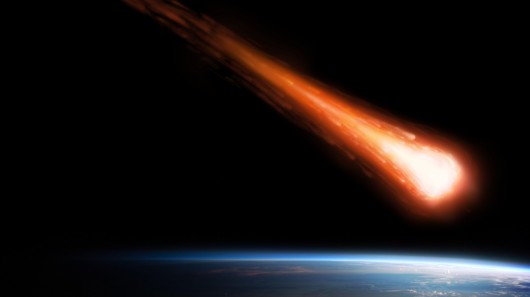Research suggests dark matter plays a significant role in our planet's mass extinction cycle
By Anthony Wood
February 24, 2015

Research carried out by New York University points towards dark matter as a driving force behind terrestrial mass extinctions (Image: Shutterstock/NASA)
A new study carried out by Professor Michael Rampino of New York University suggests that dark matter may have had a part to play in the periodic mass extinction events that are known to have taken place throughout Earth's history. It takes our planet roughly 250 million years to circle the Milky Way, and around every 30 million years the Sun's orbit takes us through what is known as the galactic disk. The galactic disk is where the majority of the mass in our galaxy resides, and alongside it a thin disk of dark matter.
Dark matter is one of the most enigmatic substances known to mankind, and is thought to make up a significant proportion of the universe. Whilst it cannot be observed directly, the gravitational effects exerted by dark matter have been observed influencing other, more visible celestial objects. The new study draws a link between Earth's crossing of the galactic disk, and the mass extinction events that periodically occur every 26 - 30 million years.
"We are fortunate enough to live on a planet that is ideal for the development of complex life, but the history of the Earth is punctuated by large scale extinction events, some of which we struggle to explain," states Rampino. "It may be that dark matter – the nature of which is still unclear but which makes up around a quarter of the universe – holds the answer. As well as being important on the largest scales, dark matter may have a direct influence on life on Earth."
Rampino believes that ordinarily benign comets that usually orbit at the very fringes of our solar system in a region of space known as the Oort cloud come into contact with dark matter concentrated in the galactic disk, the influence of which causes their orbits to become perturbed. This interference can allegedly cause comet showers, with some of the resulting disturbed bodies striking the Earth and causing extinction events. It is possible that such a meteor shower was responsible for the devastating comet strike that heralded the end of the Cretaceous period some 66 million years ago.
The second way it is believed that dark matter may trigger an extinction event revolves around the enigmatic matter becoming caught in our planet's core. Rampino theorizes that when our planet passes through a particularly dense clump of dark matter, it captures some of the particles in its gravity, and these particles are slowly drawn into Earth's core.
Once in the core, the particles of dark matter annihilate each other, creating vast amounts of heat in the process that may be responsible for extreme geological events. The associated phenomenon includes mountain-building, volcanic activity, sea level changes, and even magnetic reversal, peaking roughly every 30 million years – approximately in line with Rampino's conclusions.
A paper authored by Prof. Rampino has been published in the online journal Monthly Notices of the Astronomical Society.
Source: New York University
copyright © Gizmag 2003 - 2015
http://www.gizmag.com/dark-matter-mass-extinction-comet-earth/36239/